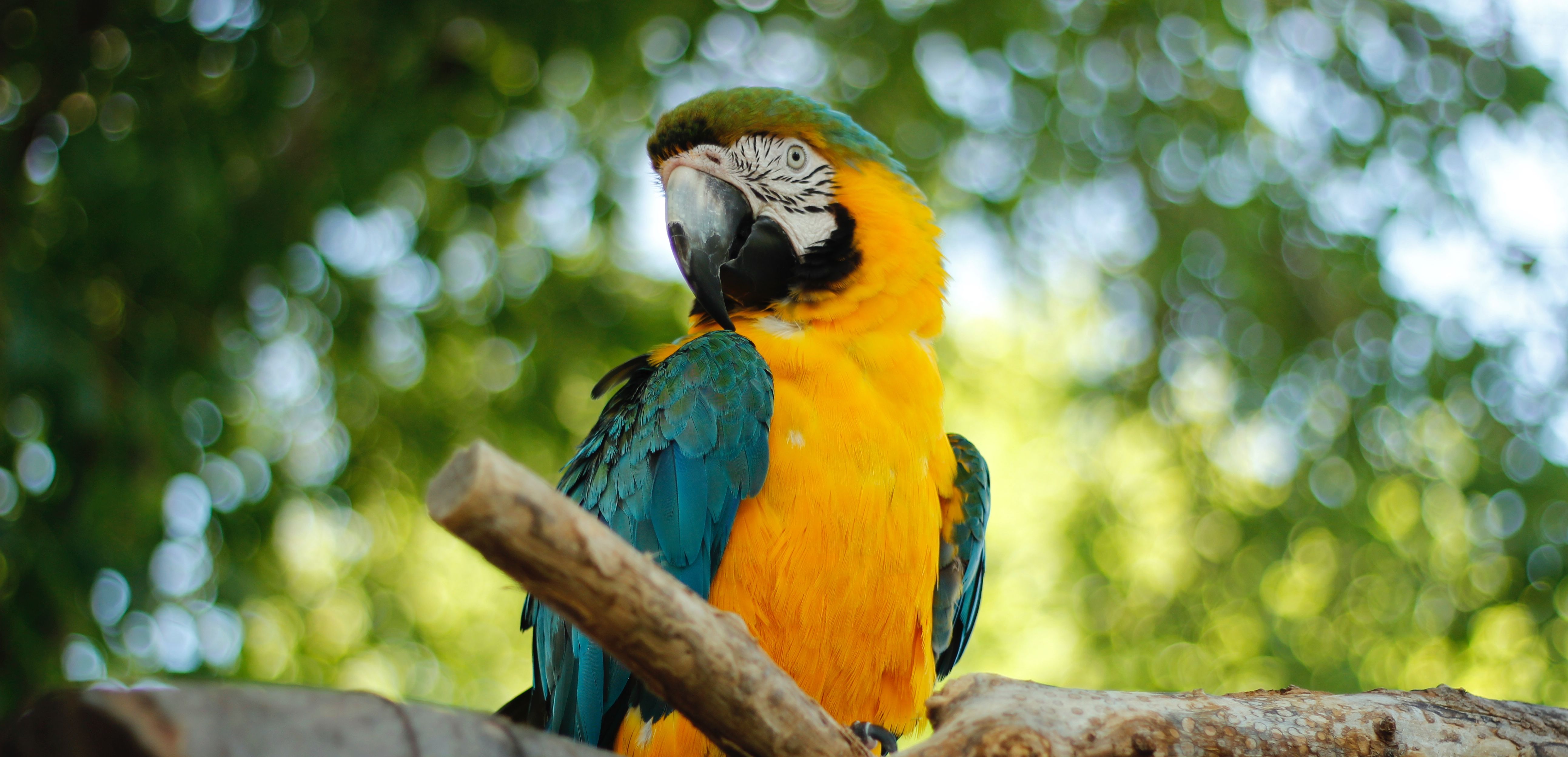Animals
Lincoln Children’s Zoo is home to over 400 animals including giraffes, cheetahs, tigers, giant anteaters, red pandas, Humboldt penguins, ring-tailed lemurs, and Galapagos tortoises. Learn more about each of the animals that live here by exploring the areas below.
*This is not an all inclusive list of the animals at Lincoln Children's Zoo
-
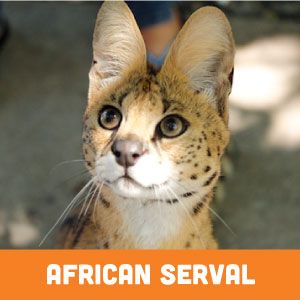
African Serval
Leptailurus servalCONSERVATION STATUS
Least ConcernNATURAL HABITAT
African servals live in savannas.DIET
IN THE WILD – Rodents, insects, reptiles, birds
IN THE ZOO – Text hereFASCINATING FACTS
• Can jump as high as 10 feet and catch birds that fly by
• Also known as a “giraffe cat”
• Young female servals stay with their mother longer than males
• Johnny shows his zookeepers he loves them by bumping his head into them! -
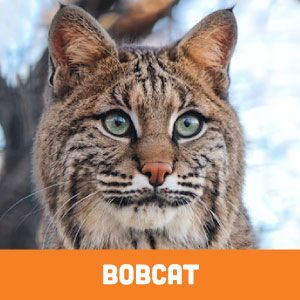
Bobcat
Lynx rufusCONSERVATION STATUS
Least ConcernNATURAL HABITAT
The Bobcat adapts well to diverse habitats and lives in forests, swamps, deserts and urban areas.DIET
IN THE WILD – Rabbits, mice, birds, squirrels and other mammals
IN THE ZOO – MeatFASCINATING FACTS
• Most abundant wildcat in the United States
• Females raise litters of one to six kittens
• Mothers care for kittens until age one
• Stalk and pounce on their prey
• Sometimes hunt mammals that are bigger than them -
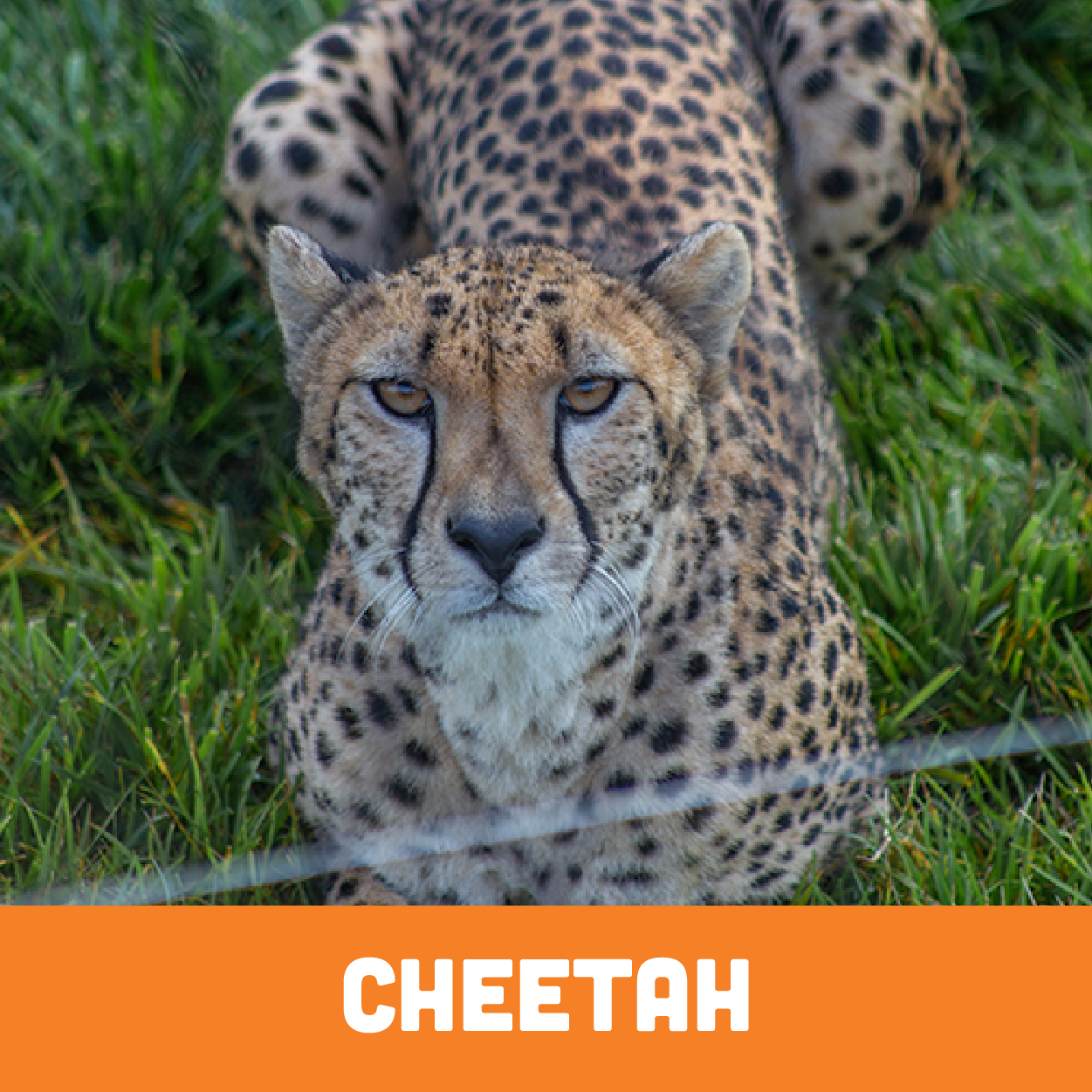
Cheetah
Acinonyx jubatusCONSERVATION
VulnerableNATURAL HABITAT
Found in grasslands, savannas, areas with dense vegetation and mountainous regionsDIET
IN THE WILD – Variety of small antelope, rabbits, warthogs, gazelles and birds
IN THE ZOO – Specialized carnivore diet, whole prey, and bonesFASCINATING FACTS
• Cheetahs are the fastest land mammal in the world, reaching speeds of 70 mph in three seconds, which is faster than the acceleration of a sports car!
• Cheetahs may be fast, but they are only able to maintain that speed for around a minute.
• They are the only big cat that cannot roar but they often purr, especially when close to other cheetahs.
• Cheetahs have built-in sun glare protection that runs from the inside corner of their eyes down to the outside edges of their mouth. This helps them hunt their prey in direct sunlight by reflecting the sun’s glare.
• Their eyesight is exceptional, allowing them to spot their prey over three miles away.
• Cheetahs use their tail to control their steering and keep balance while they are running at top speed.
• They have special semi non-retractable claws that work like football cleats and provide traction while running.
• Their fur is covered in black spots and so is their skin. The black hair grows out of the black spots on their skin. -
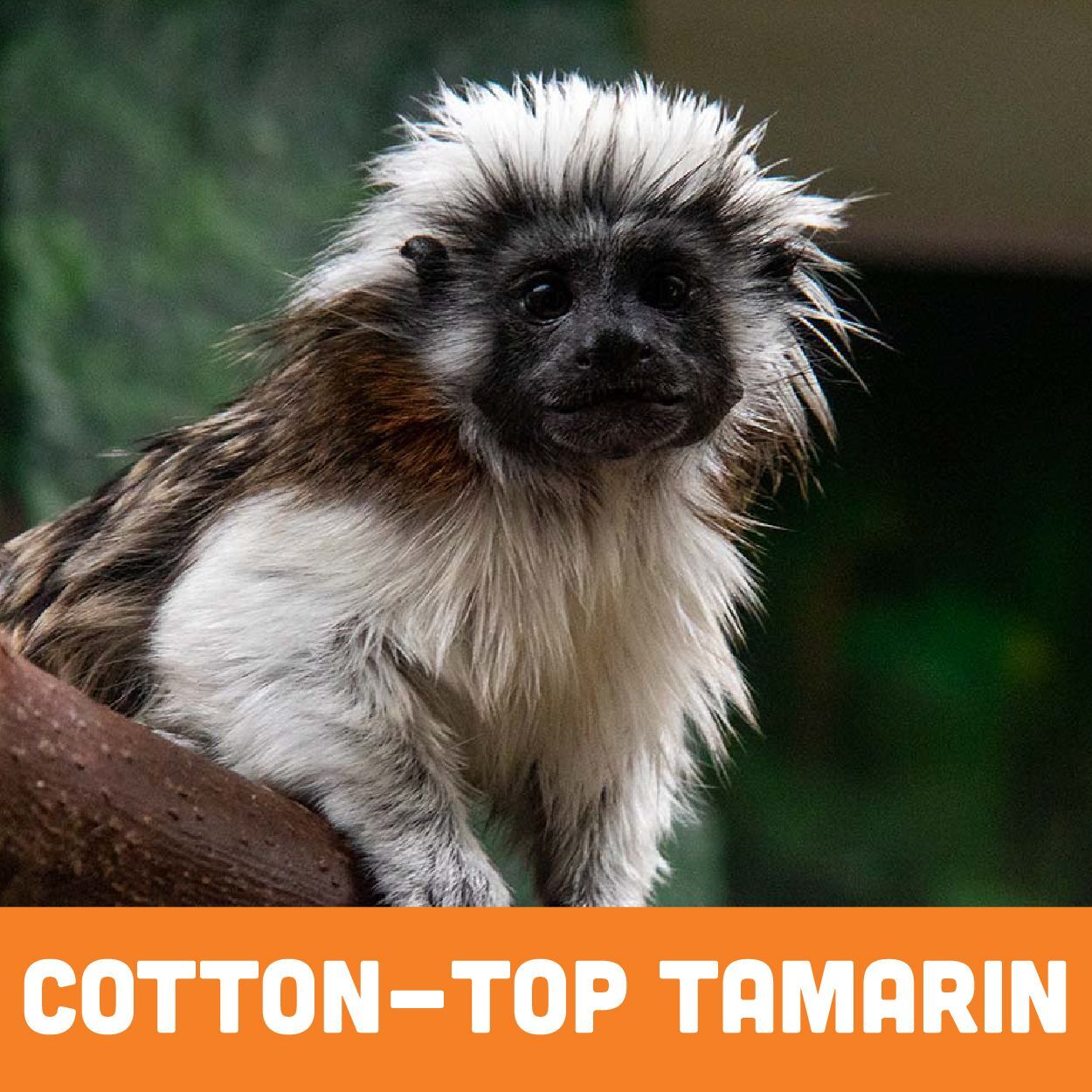
Cotton-top Tamarin
Saguinus oedipusCONSERVATION STATUS
Critically EndangeredNATURAL HABITAT
Cotton top tamarins are found in rainforests and open woodlands of Columbia.DIET
IN THE WILD – Fruit, insects, sap, fallen eggs, nectar, small invertebrates and seeds
IN THE ZOO – Fruit and insectsFASCINATING FACTS
• Live in groups that consist of 2 to 14 tamarins
• Groups are led by the oldest female
• Forage by day and sleep in a tree at night
• While the others sleep, one tamarin stays on guard to protect from predators • Each group member is groomed equally in order to maintain their bond
• Use scent marking to secure their territory -

Dromedary Camel
Camelus dromedariusCONSERVATION STATUS
Least ConcernNATURAL HABITAT
The Dromedary camel roams in arid regions.DIET
IN THE WILD – Any vegetation they find
IN THE ZOO – Hay and specially formulated grainFASCINATING FACTS
• Can drink 30 gallons of water in 13 minutes.
• Store fat in their hump, not water.
• Have flat, round feet to keep them from sinking in the sand.
• No longer considered wild animals. In Africa and Arabia they are semi-domesticated animals that have free range, but are under the control of herders. -
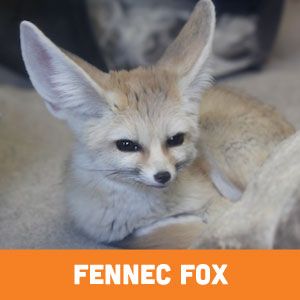
Fennec Fox
Vulpes zerdaCONSERVATION STATUS
Least ConcernNATURAL HABITAT
The fennec fox lives in the dry sandy regions of the African Sahara desert.DIET
IN THE WILD – Fruits, insects, plants, eggs and small rodents
IN THE ZOO – Fruits, insects, rodents and canine dietFASCINATING FACTS
• World's smallest species of fox
• Large ears dissipate heat to keep them cool
• Hearing is so sensitive, they can hear prey moving underground
• Hairy feet protects them against hot desert sand
• Only weigh 2 to 3 pounds -
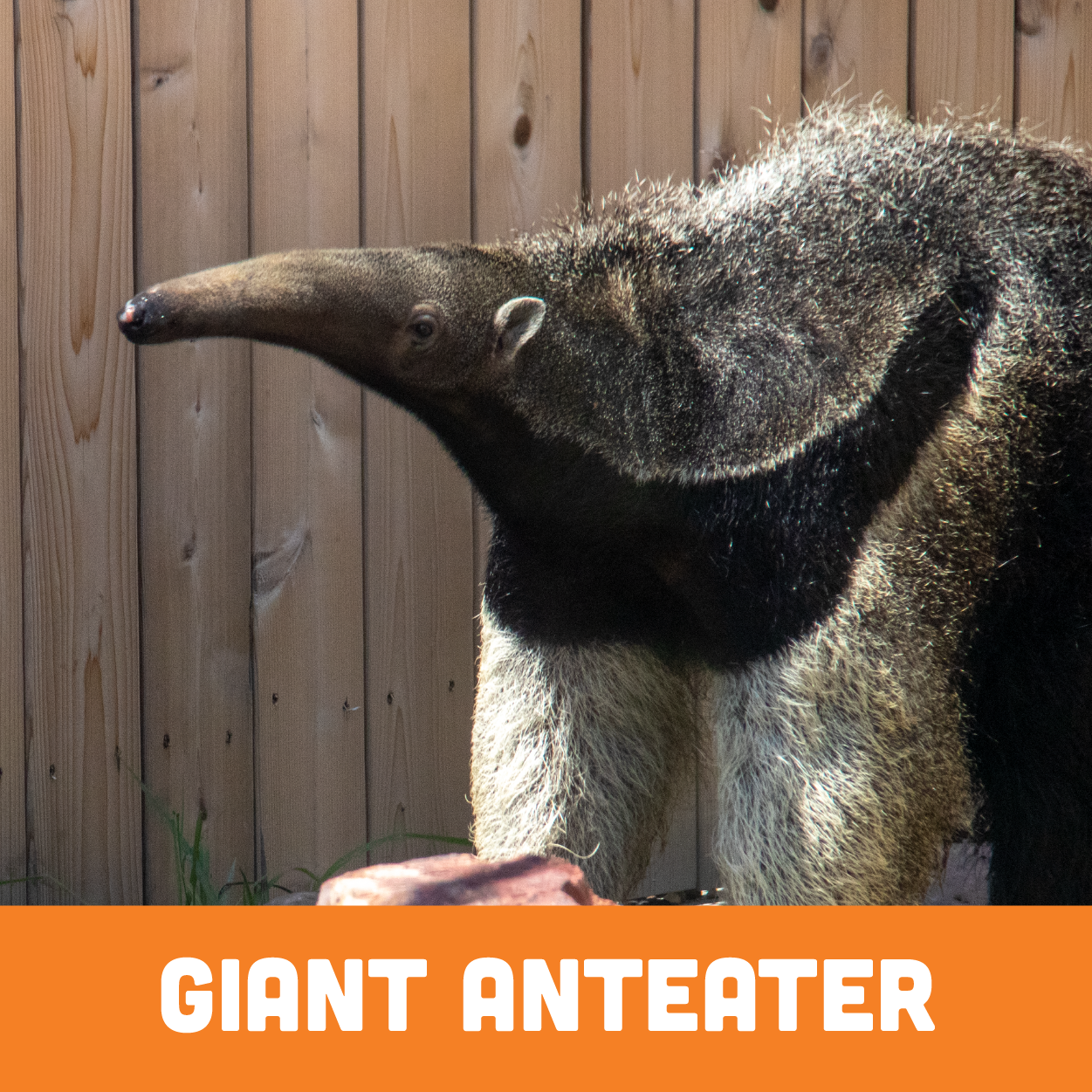
Giant Anteater
Myrmecophaga tridactylaCONSERVATION STATUS
VulnerableNATURAL HABITAT
Found in grasslands, savannas, and open areas of tropical forestsDIET
IN THE WILD – Termites, ants, insect larvae, beetles and occasionally fruit
IN THE ZOO – Specially formulated insectivore diet, insects, and fruitFASCINATING FACTS
• Giant anteaters do not have teeth; instead, they have a tongue that is 2 feet in length.
• Their tongue is coated in a sticky saliva allowing them to slurp up ants and termites.
• They can flick their tongue out up to 150 times per minute.
• If threatened, they may make a roaring sound, but typically will remain non-vocal. They will often rear up on their hind quarters and swipe with their long front claws.
• They can eat up to 30,000 insects a day.
• The giant anteater’s sense of smell is 40 times more powerful than ours.
• In order to avoid being bit by an ant during feeding, the giant anteater feeds for only a minute before moving on to the next colony.
• They have one of the lowest body temperatures of any mammal at 91 degrees Fahrenheit, which is most likely due to their insect diet that is very low in calories.
• Giant anteaters are great swimmers, using the freestyle stroke and their long nose as a snorkel. -
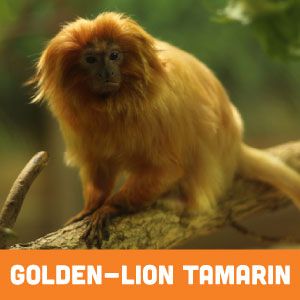
Golden Lion Tamarin
Leontopithecus rosaliaCONSERVATION STATUS
EndangeredNATURAL HABITAT
The Golden lion tamarin lives in a small area of the tropical rainforest.DIET
IN THE WILD – Fruits and insects
IN THE ZOO – Fruits, vegetables and insectsFASCINATING FACTS
• Largest member of the marmoset and tamarin group
• Have claws instead of nails enabling them to grab insects in tight spots
• Sleep in hollow tree cavities or dense vines
• Sleep in different dens each day, making it harder for predators to find them -

Greater Bushbaby
Otolemur crassicaudatusCONSERVATION STATUS
Least ConcernNATURAL HABITAT
The greater bushbaby lives in Eastern Africa woodlands.DIET
IN THE WILD – Insects, sap from trees and seeds
IN THE ZOO – Fruit, vegetables, insects, insectivore pellets and gels packed with nutrientsFASCINATING FACTS
• Use their big eyes for night vision
• Use big ears to find insects
• Newborns weigh less than half an ounce
• Make a loud call that sounds like a baby crying -

Matschie's Tree Kangaroo
Dendrolagus matschieiCONSERVATION STATUS
EndangeredNATURAL HABITAT
The Matschie's tree-kangaroo can be found in mountainous areas of the rainforest.DIET
IN THE WILD – Leaves, nuts and mosses
IN THE ZOO – Lettuce, fruits, vegetables and specially formulated biscuitsFASCINATING FACTS
• Spend most of their time in trees, coming down occasionally to feed
• Licks forearms, letting the evaporation cool its body instead of sweating
• Fetus-like young crawl into mother's pouch after birth
• Babies are called joeys and stay in the mother's pouch for ten months -
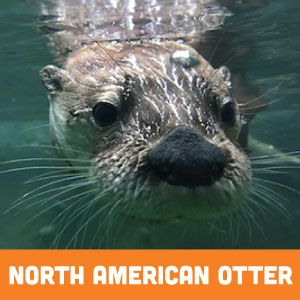
North American River Otter
Lontra canadensisCONSERVATION STATUS
Least ConcernNATURAL HABITAT
The North American river otter lives in lakes, rivers, wetlands, coastal shorelines, marshes and estuaries.DIET
IN THE WILD – Fish, frogs, insects, crustaceans and small mammals
IN THE ZOO – Fish, meat and carrotsFASCINATING FACTS
• Members of the weasel family
• Have waterproof fur that protects their skin and keeps it warm and dry
• Can dive to a depth of 60 feet
• Enjoy sliding down muddy hills, bouncing objects in their paws, playing tag and wrestling -
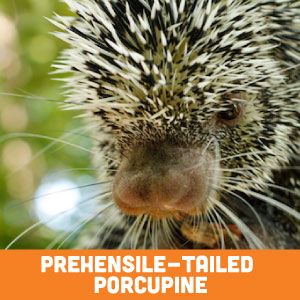
Prehensile-tailed Porcupine
Coendou prehensilisCONSERVATION STATUS
Least ConcernNATURAL HABITAT
Prehensile-tailed porcupines live in trees in South American forests.DIET
IN THE WILD – Leaves, flowers, roots, shoots
IN THE ZOO – Fruit/vegetable mix, rodent blockFASCINATING FACTS
• DNA tests are needed to find out if the porcupine is male or female
• Stomps its feet to scare attackers
• Are nocturnaL
• Renzo’s favorite treat is peanuts! -
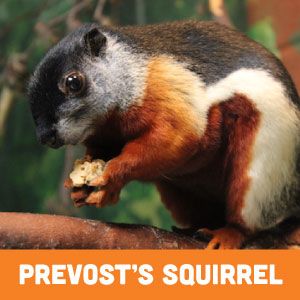
Prevost's Squirrel
Callosciurus prevostiiCONSERVATION STATUS
Least ConcernNATURAL HABITAT
The Prevost's squirrel is found in the trees of dense rain forests.DIET
IN THE WILD – Fruits, nuts, seeds, buds, flowers, insects and bird eggs
IN THE ZOO – Fruits, vegetables, rodent blocks and protein biscuitsFASCINATING FACTS
• Carries fruit away from trees and drops the seeds on the ground, producing new plants
• One-year-olds can have up to 3 litters of young each year
• Each litter can have 1 to 4 young
• Uses tail for balance when running and climbing and as a rudder when jumping
• Communicates by trilling, whistling or raising tail -

Red Panda
Ailurus fulgensCONSERVATION STATUS
EndangeredNATURAL HABITAT
The Red panda prefers to live in mountainous mixed deciduous and conifer forests with old trees and dense under stories of bamboo.DIET
IN THE WILD – Bamboo, berries, nuts, eggs, flowers and seeds
IN THE ZOO – Bamboo, apples and specially formulated biscuitsFASCINATING FACTS
• Communicate with chipmunk-like sound
• Long bushy tail helps balance in trees and provides cover when sleeping
• Have many nicknames- fire cat, lesser panda, common panda and more
• Can eat 80 pounds of bamboo in one day living in the wild
• Excellent tree climbers -
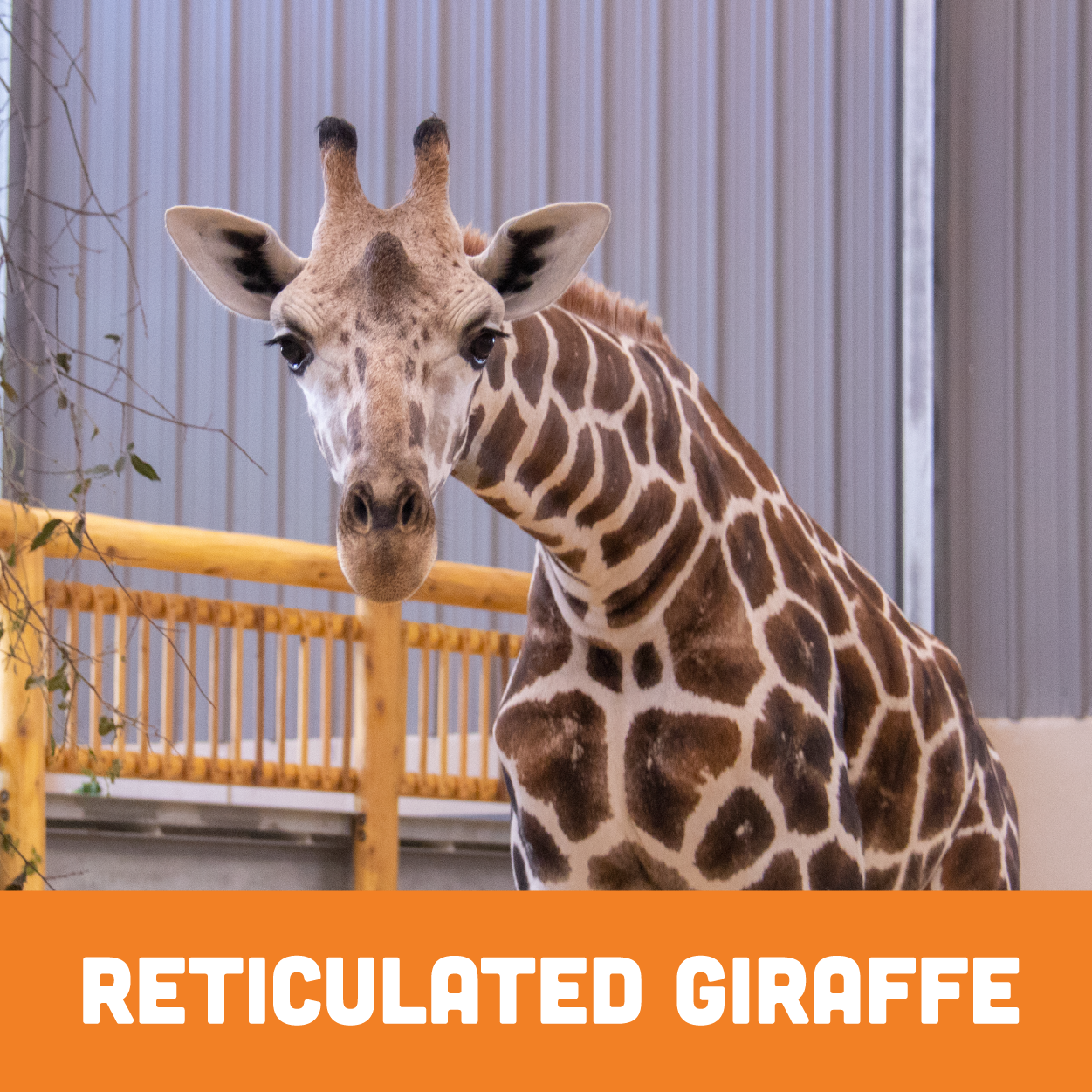
Reticulated Giraffe
Giraffa camelopardalis reticulataCONSERVATION STATUS
VulnerableNATURAL HABITAT
The reticulated giraffe is found in in the savannas of Africa.DIET
IN THE WILD – Leaves, fruits and seedpods
IN THE ZOO – Grass, hay, grain and browse (leaves)FASCINATING FACTS
• Spot patterns are completely unique to each individual
• Have a gestation period of 15 months
• Tallest living land mammal reaching heights up to 18 feet
• Only have seven bones in their neck
• Heart can weigh up to 22 pounds and measure up to two feet
• Sleep between 3 to 5 hours per day
Conservation
Lincoln Children’s Zoo is committed to animal conservation efforts and saving animals from extinction. Home to over 30 endangered animals, the Zoo strives to provide the highest-quality care to these near extinct species. Lincoln Children’s Zoo partners with organizations throughout the world that manage captive animals and wild animals with a goal to create a plan to ensure endangered animals are saved and protected for future generations.
The Zoo is part of the Association of Zoos & Aquarium’s Species Survival Plan, which oversees the management of select species with the goal of enhancing conservation in the wild. Species Survival Plan is led by expert advisors who work together to manage the demographic distribution and long-term sustainability of nearly 500 species.
Photo Ark Collaboration
Lincoln Children’s Zoo collaborates with National Geographic photographer Joel Sartore and his Photo Ark project. The Photo Ark is a groundbreaking effort to document species before they disappear and to get people to care while there’s still time. The Photo Ark started at Lincoln Children’s Zoo with the first photograph taken of a naked mole rat. To date the Photo Ark has documented 10,531 species. Find out more about Joel Sartore’s Photo Ark here.

